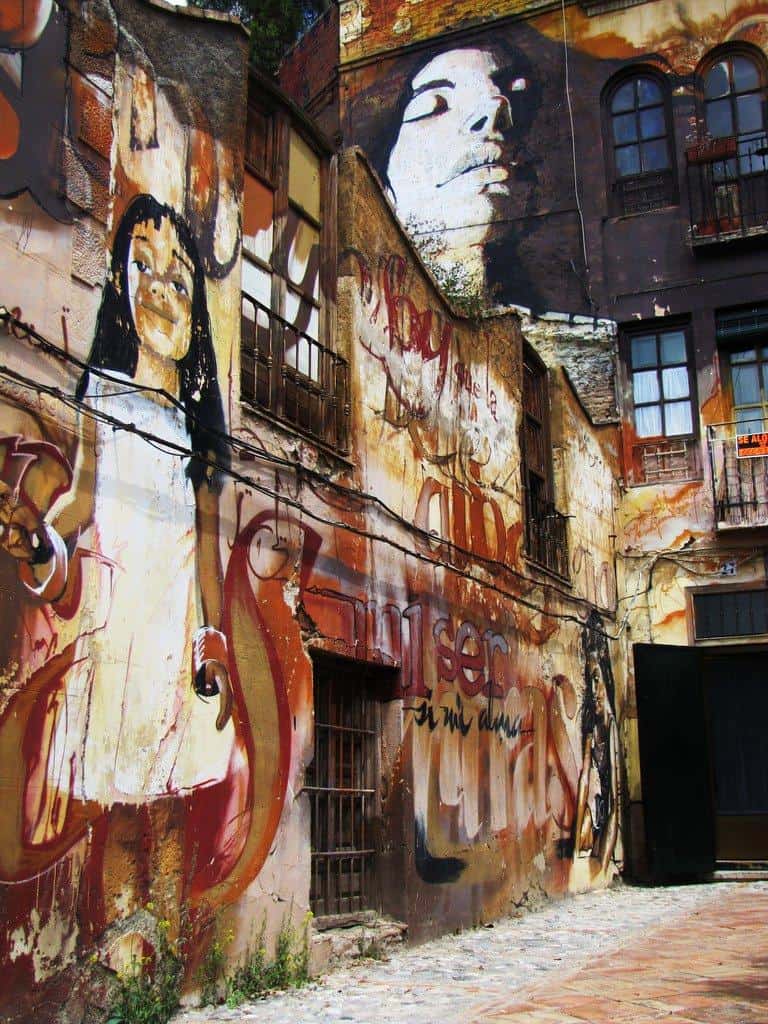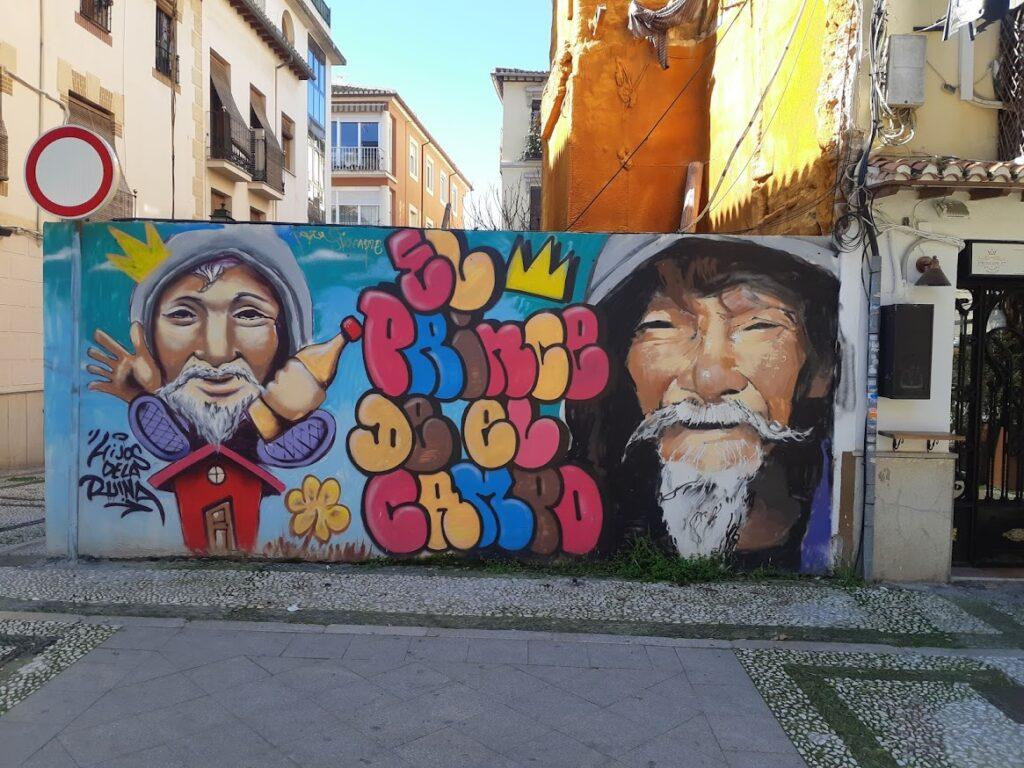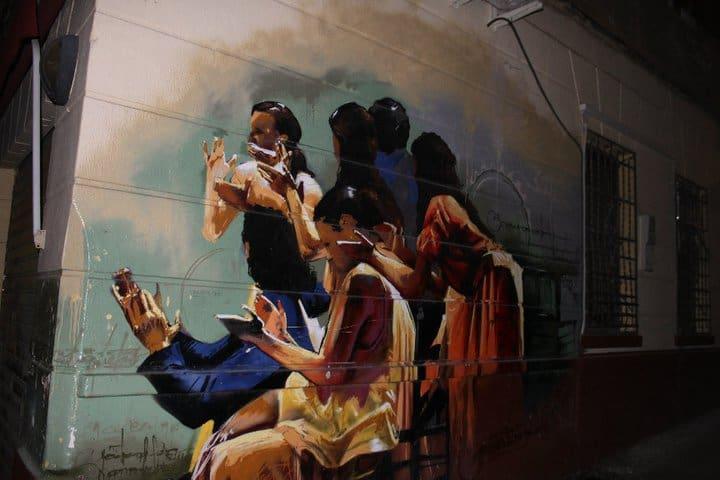- Home
- Listings
- Things To See & Do
- Car Hire
- News
- Properties
- What’s On
ES
Street Art
Graffiti in Granada: Where Art Meets History

Granada is renowned for its rich cultural heritage, breathtaking Alhambra Palace, and the vibrant atmosphere that permeates its cobbled streets. Yet, amidst this blend of Moorish architecture and Spanish tradition, another form of art has found its place – graffiti.
In recent years, Granada has become a canvas for a diverse array of street artists, each contributing to the city’s urban tapestry in their own unique way. From the narrow alleys of the Albaicín to the bustling squares of the city center, graffiti has become an integral part of Granada’s artistic identity.
The Realejo neighborhood, once the Jewish quarter of Granada, has seen an explosion of street art in recent years. The juxtaposition of ancient synagogues and modern murals creates a powerful visual narrative of continuity and change.
Many of the artists draw inspiration from Granada’s complex history and cultural melting pot. The influence of the Moors, the Spanish Inquisition, and the ensuing religious diversity can be discerned in the motifs and symbols that adorn the city’s walls. Some pieces pay homage to Granada’s most famous historical figures, such as the poet Federico García Lorca, while others convey messages of unity, tolerance, and social justice.


Granada’s graffiti scene is not confined to a single style or medium. Stencils, freehand murals, wheat-paste posters, and intricate mosaic installations all find their place within the urban landscape. This diversity of form and technique is a testament to the eclectic range of artists who contribute to the city’s visual narrative.
Furthermore, the local government and community organizations have recognized the cultural value of graffiti in Granada. Many initiatives have emerged to support and promote street art as a legitimate form of artistic expression. Various festivals and events celebrate the talent of local and international artists, providing them with designated spaces to showcase their work.
In the end, graffiti in Granada transcends the mere act of painting walls; it is a living, evolving dialogue between the past and present, tradition and modernity. As you wander through the streets of this enchanting city, you are not only met with the whispers of history but also the vibrant shouts of contemporary artists who have found their voice amidst the ancient stones. In Granada, graffiti is not vandalism; it is a celebration of creativity, an homage to heritage, and a testament to the enduring power of art.
El Niño de las Pinturas
El Niño de las Pinturas is a street artist whose creations have become an integral part of Granada’s artistic identity. His paintings can be found on urban walls in countries all over the world (New York, Venezuela, Netherlands, Portugal, Mexico. His murals are more than just paint on walls; they are vibrant, living narratives that capture the essence of Granada. With a masterful use of color and form, he breathes new life into forgotten corners, transforming them into canvases that tell stories of the city’s past, present, and dreams of the future. Throughout the years, El Niño has garnered recognition far beyond the narrow confines of Granada’s streets. His art has been exhibited in galleries, and he has been invited to showcase his talent in various international events. Yet, he remains firmly rooted in his hometown, where his murals continue to inspire and captivate both locals and visitors alike.

Route to explore El Niño de las Pinturas Street Art
Realejo:
Calle Santa Escolástica (Restaurante Candela and Restaurante Hicuri ) – Calle Molinos (Hotel El Molino) – Campo del Príncipe – Cuesta del Caidero- Colegio Santo Domingo de Vistillas – Placeta Joe Strummer – Parque de la Palma – Paseo de las Palmas
Then we go to Barranco del Abogado area: Calle de las Mercedes
We can also to Chana neighbourhood (Valeo-Liv Student, calle Acacias 1), Calle Rubén Darío 1, or Calle Veleta 3.

‘Les Rivages de Almuñécar’, the largest mural in Europe
Almuñécar boasts of hosting the largest mural in Europa. The artist José Fernández Ríos has completed a work spanning 7,000 square meters across three buildings located on Velilla Beach in the municipality of Almuñécar. The piece depicts a woman taking a stroll on the beach accompanied by her dog.
The project originated from the French developer Les Rivages, which decided to build a luxury housing development in Almuñécar.
The artists spent eight hours a day on a scaffolding painting a few centimeters from the wall. Between brushes and brushes, José Ríos has drawn a beach on the back of three buildings in Almuñécar… three twelve-storey buildings that until now prevented seeing the coast. This work is a “trompe-l’œil” in which the views from the mountain create an optical illusion, making the buildings appear transparent, aligning with the shoreline through the structures, blending the sea with the terraces of the buildings.
Gallery
Examples of street art in Granada and the Costa Tropical
